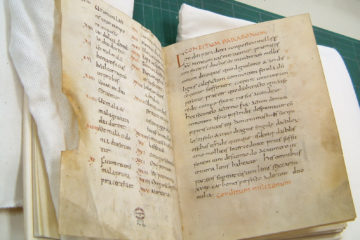A&S
Medieval Style Bread part 4
21. part 2
Hmmm… I think I should start giving these posts better names. Like Rolof.
Anyway. The next part of my mission is accomplished. I made bread this week that seems to fit the descriptions.
It is thick, and hard to kneed, and has a tight enough crumb that I can easily see the stale version being good for trenchers. It’s also whiteish. Although I haven’t done my flour experiments yet, I imagine that this bread would not be dissimilar in colour to what was eaten in the 16th century.
I kinda winged it this time round. Here is the recipe that I used (created retroactivly):




